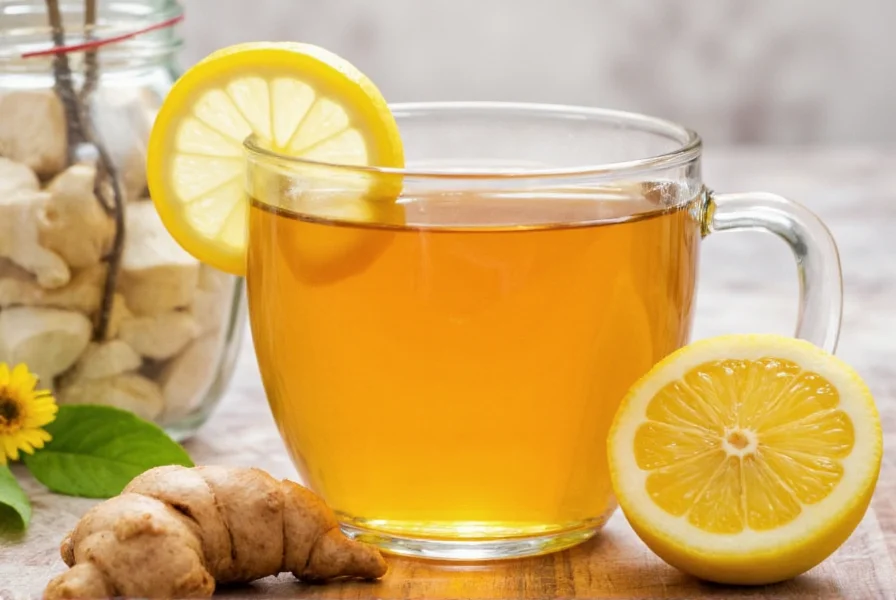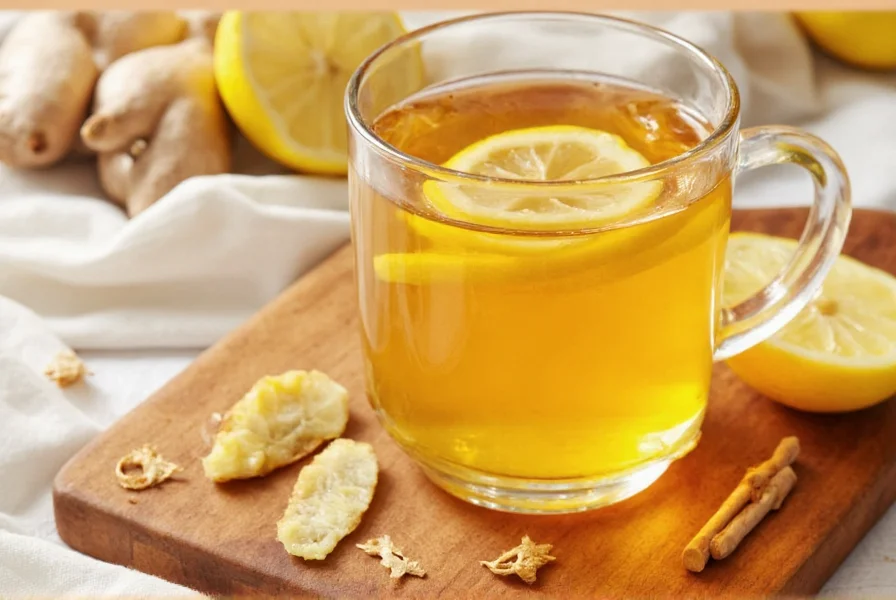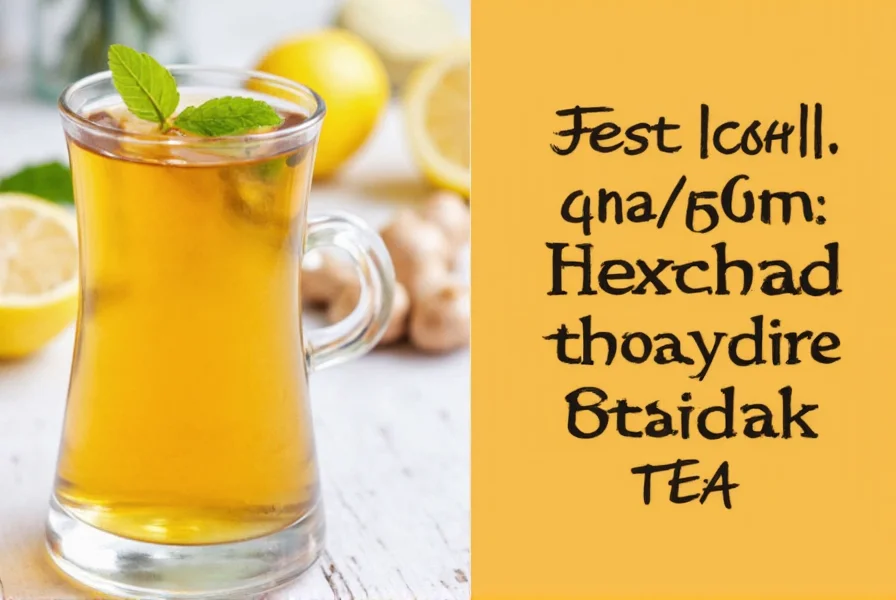Honey lemon ginger tea has become a staple in wellness routines worldwide, valued for its simplicity and potential health-supporting properties. This traditional remedy combines three powerful natural ingredients that have been used for centuries across various cultures. Unlike many commercial beverages, this tea contains no artificial additives and can be prepared in minutes with basic kitchen ingredients.
The Science Behind the Ingredients
Ginger contains bioactive compounds like gingerol, which studies suggest may have anti-inflammatory and antioxidant properties. Research published in the Journal of Medicinal Food indicates ginger may support digestive health by accelerating gastric emptying. Lemon provides vitamin C and flavonoids that contribute to the drink's antioxidant capacity. Honey, particularly raw varieties, contains small amounts of enzymes and polyphenols that may offer additional wellness benefits.

Perfect Honey Lemon Ginger Tea Recipe
Creating an effective honey lemon ginger tea requires proper technique to maximize flavor and potential benefits. Follow this evidence-based preparation method:
| Ingredient | Amount | Preparation Tip |
|---|---|---|
| Fresh ginger root | 1-2 inch piece | Thinly slice or grate for maximum extraction |
| Fresh lemon juice | 1-2 tablespoons | Add after cooling to preserve vitamin C |
| Raw honey | 1-2 teaspoons | Stir in when tea cools below 140°F (60°C) |
| Hot water | 8-12 ounces | Just below boiling point (195-205°F) |
Step-by-Step Preparation
- Peel and thinly slice 1-2 inches of fresh ginger root
- Pour 8-12 ounces of hot water (just below boiling) over the ginger
- Cover and steep for 10-15 minutes for optimal extraction
- Strain the tea into your cup
- Allow to cool for 2-3 minutes until temperature drops below 140°F
- Add 1-2 tablespoons of fresh lemon juice
- Stir in 1-2 teaspoons of raw honey until dissolved
Optimal Consumption Guidelines
For those wondering when to drink honey lemon ginger tea for maximum benefits, research suggests consuming it:
- First thing in the morning to support digestion
- 30 minutes before meals to potentially aid digestive processes
- In the evening to promote relaxation before sleep
The best time to drink ginger lemon honey tea for cold relief appears to be at the first sign of symptoms. A study in the Journal of Ethnopharmacology noted ginger's potential to reduce throat irritation. However, it's important to note this beverage complements but doesn't replace medical treatment.
Evidence-Based Benefits and Limitations
While many search for honey lemon ginger tea benefits for weight loss, current research shows limited direct evidence. The drink may support weight management efforts by:
- Replacing higher-calorie beverages
- Potentially supporting metabolism through ginger's thermogenic properties
- Aiding digestion which may reduce bloating
For those asking does honey lemon ginger tea help with sore throat, the warm liquid can provide soothing relief while honey's texture may coat the throat. Lemon's acidity might help break up mucus, though scientific evidence for this specific combination is limited.
Who Should Exercise Caution
While generally safe, certain individuals should moderate consumption of homemade honey lemon ginger tea:
- People with ginger allergies (rare but possible)
- Those taking blood thinners, as ginger may enhance their effects
- Individuals with gastroesophageal reflux disease (GERD)
- Children under 1 year should not consume honey due to botulism risk

Storage and Batch Preparation
For those interested in how to make honey lemon ginger tea for cold and flu season in bulk, consider these storage tips:
- Prepare ginger infusion concentrate (ginger + water) and store in refrigerator for up to 5 days
- Add lemon and honey only when serving to preserve nutritional properties
- Freeze ginger slices in ice cube trays with water for convenient single servings
- Never store prepared tea with honey at room temperature for extended periods
Frequently Asked Questions
Can honey lemon ginger tea cure a cold?
No, honey lemon ginger tea cannot cure a cold. While it may provide symptomatic relief for sore throats and congestion, colds are viral infections that must run their course. The tea's warmth and ingredients may offer comfort, but it's not a medical treatment.
How often can I safely drink honey lemon ginger tea?
Most adults can safely enjoy 1-3 cups of honey lemon ginger tea daily. Excessive consumption (more than 4 grams of ginger daily) may cause digestive discomfort in some individuals. Listen to your body and adjust accordingly.
What's the difference between using fresh versus dried ginger?
Fresh ginger contains higher levels of gingerol, the compound responsible for many potential benefits. Dried ginger has different chemical properties and may be less potent. For maximum potential benefits, fresh ginger root is preferred in honey lemon ginger tea preparation.
Why shouldn't I add honey to boiling water?
Adding honey to boiling water (above 140°F/60°C) can destroy beneficial enzymes and reduce its potential wellness properties. For maximum benefit, add honey after the tea has cooled slightly but is still warm enough to dissolve the honey completely.











 浙公网安备
33010002000092号
浙公网安备
33010002000092号 浙B2-20120091-4
浙B2-20120091-4